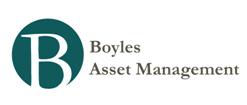Chou Funds: 2010 Semi-Annual Report
NON-INVESTMENT GRADE AND INVESTMENT GRADE BONDS ARE NOW FULLY PRICED: Non-investment grade bonds have rallied tremendously from their lows in March 2009, and at current prices we believe they are close to fully priced. For example, three and a half years ago the spread between U.S. corporate high yield debt and U.S. treasuries was 311 basis points. Currently, it is about 696 basis points, down from its peak of over 1,900 basis points in December 2008. (Source: JP Morgan).
Similarly, we believe that investment grade bonds are now close to fully priced.
However, when compared to corporate bonds, U.S. treasuries are in bubble territory. In our opinion, this is the worst time to hold cash and short-term treasuries unless you believe we are headed into a 1930s style depression. And if you believe that you should redeem all your Fund units.
In equities, we believe the financial, retail and pharmaceutical sectors are undervalued.
…..
An Interesting Way to Invest in Banks
Please note: the investment described below is the view of the writer and should not be seen as a recommendation.
One of the more interesting ways to invest in the better capitalized banks is through the stock warrants that were issued to the U.S. Treasury by the banks when they received funds under TARP. The stock warrants give the holder the right to buy the bank's stock at a specific price. When the banks repaid TARP funds to the U.S. Treasury, the U.S. Treasury either sold the stock warrants back to the banks or they auctioned them to the public.
So, what is so unique about these stock warrants?
- Richard Duncan Quotes
Longer excerpt from The New Depression (taken from my Kindle highlights, so the excerpts aren't necessarily the paragraphs I have put them in below, and there may be things in between that I didn't highlight). “The amount...
- Chou Funds: 2012 Semi-annual Report
Found via the Corner of Berkshire & Fairfax. Following up on a past letter, we continue to believe U.S. financial institutions are very cheap and TARP warrants associated with these companies are an attractive way to invest in them. Depending on the...
- Are Individual Investors Fleeing Stocks? Nope – By Jason Zweig
A new report from Vanguard Group casts some doubt on the meme that retail investors have been fleeing stocks like rats from a sinking ship. The report, “How America Saves,” is the latest installment in Vanguard’s annual survey of the more than...
- Barron's Interviews - Howard Marks And Rob Arnott
From November and December. Interestingly, they both mentioned convertible bonds as an attractive area right now.-Interview with Howard Marks (11/17/2008):-What went wrong with risk management?- First of all, you need a risk manager who knows the business...
- The Reductions In Board Lot. What It Means And Should It Affect You?
I'm sure many people are aware by now of this date. 19 January 2015. Singapore Exchange (SGX) will reduce the standard board lot size of securities listed on SGX from 1,000 to 100 units from 19 January 2015. A smaller board lot size will make it...

